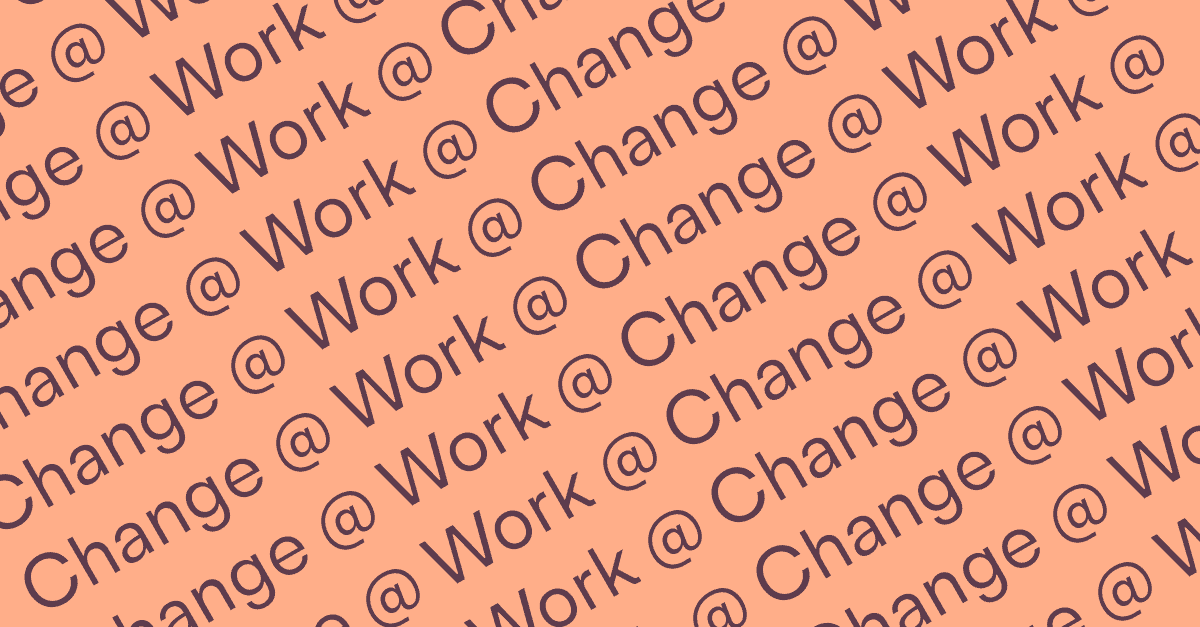Amy Matthews and Sarah Barnaby, Co-Founders of Babies Project, open the floor for audience members to ask questions about how best to take care of loved ones—both elders and children—while working remotely. With the introduction of new technologies, we have the opportunity to modify our caregiving practices in innovative ways. And while balancing priorities, it’s important to keep in mind that everyone is experiencing some form of a transition, no matter their age.
Read the Transcript
Sarah Barnaby:
Amy and I are the co-founders and co-directors of Babies Project. We have a space in New York. Babies Project is actually a DBA name. Our official incorporated name is Developmental Movement Project. So we work a lot with babies but we also work with adults, and we see developmental movement as something that applies to everyone at every stage. You want to go from there, Amy?
Amy Matthews:
Sure, yeah. So we talked in the last breakout about how we work, maybe with adults more, and we thought this time could be open, open to people’s questions about how we apply this, with working with infants. So working with infants ends up being about working with adults. And I think, part of what we said earlier is… Or, for me, what was key in what we said earlier, was that our point is not to automatically know what a baby needs.
Our point is not to teach them, or to lead them to an experience, but to be their environment, to be with them. And then, this plays out in all kinds of ways, with, really with caregivers, with babies, with adults. We talk about babies of all age, do. And Sarah and I talked a lot about it, a lot of what might unfold from your specific questions. So if you guys have questions, I think we can go from there, with what your interest is.
Lucy Blair Chung:
Yeah, let’s do that. So, Carrie.. Oh, Sarah, did you have another point?
Sarah Barnaby:
I just wanted to say if anyone missed it, and they’re interested, if you go to our website, babiesproject.org, and we’ve written a lot about our principles and our approach, and a lot of what we shared in the opening came out of that, kind of crystallizing those ideas.
Lucy Blair Chung:
And we’ll also have video of their breakout that they did earlier, that I thought did a really nice job of teeing it up, and also doing a broader human relating. Everyone saw the parallels, which was great, to kind of, the corporate environment.
Okay. So right away, Carrie. So Carrie, I’m going to unmute you, and you’ll just talk like you’re calling into an infomercial. That’s kind of how I imagine this. So I’m going to unmute you, and then you can ask your, your question of Amy and Sarah.
Okay. So you’re unmuted, Carrie, but you’re still, let me unmute you here yet. So if you’re muted on your, I’ve just opened it for you, but if you’re still muted on your end? There you go. Ask away, Carrie.
Carrie Girstantas:
Can you hear me okay?
Lucy Blair Chung:
Yeah. Where are you calling in from?
Carrie Girstantas:
Calling from Charlottesville, Virginia.
Lucy Blair Chung:
Are you and your loved ones healthy and well?
Carrie Girstantas:
Well, I am taking care of a foster dog, and I am all by myself and I am a caregivers for three family members that are in treatment facilities. So it’s a strange scenario. My mom is in assisted living with dementia, and then I’ve got two other family members in recovery work.
And so, my role has changed radically, and I’m just, have gotten so much from Amy and Sarah, in getting to be at the Babies Project in New York. And so, this is more my heart work, as well, but my practical life is caring for people that are isolated, and have been very reliant on some of my practices of touch, and a presence that may not be available where they are. So I don’t know if that was a question, but, hello.
Amy Matthews:
Hi! Hi, Carrie!
Sarah Barnaby:
Hi, Carrie.
Amy Matthews:
Dou have a question for us, or something you want us to talk more about?
Lucy Blair Chung:
I think it’s the… I have a lot of experience in how to be with people face to face, and I am questioning my own ability to have that be as effective virtually. That’s, I think, the question.
So, anything that’s going to help me help the people I care about through these technologies, I guess, is maybe the thing. I feel like I’m able to do my practices, I just am having to empower other people to begin theirs.
Amy Matthews:
Well, I think I heard a speaker earlier talk about, well, and Sarah said it, but someone else, about using words more. I think that that also, to me, what being online makes me do explicitly is not assume I know, which came up before as a thought.
But I think that, to keep asking people what their experience is, and then keeping, willing, in practice, like I think of all the different things I’ve studied in, and using them to be able to entertain more possible ways to be in the world. Kind of like, how can I comprehend someone’s experience, when they’re not having my experience?
And to me, that’s the practice now, because I can’t go on what comes from presence. I can’t go on nonverbal cues, really. So I think, I think it’s a practice of making things more explicit, however we do it, by drawing pictures, or, I mean, I heard a ton of great ideas earlier about how to help people participate.
Sarah Barnaby:
And I think this came up before, and you talked around, you talked something about it, Amy. I’m also wondering about, on the other end, what is helpful to the people, in terms of contact? I just heard from my partner whose mother is in a assisted living facility, far away, that they’re doing iPads for connection.
So is it seeing a human face, a familiar human face makes a difference? Is it having longer conversations on the phone, including, maybe, long pauses? I don’t know. It’s new territory, and something we have to work out together, each of us, with our people we’re trying to help.
Amy Matthews:
Can’t hear, Lucy.
Sarah Barnaby:
Can’t hear you, Lucy.
Lucy Blair Chung:
Sorry about that. I unmuted Carrie, and then didn’t unmute myself. Carrie, thank you for that question. I’m going to move to a different one, because it looks like someone else also chimed in similarly.
Lucy Blair Chung:
Patty Jo says, “Amy and Sarah, in support of Carrie, how can you best be present, in a coaching or caregiver role, with technology in the middle, especially with elders who may be afraid of the technology? And I’d be curious too, with babies, as well, what is your perspective on that? How do you caregive with technology in the middle now?”
Amy Matthews:
I feel like it’s the same. I mean, technology makes a difference, but I think it also, it does still depend on the baby, on the elder. And I think, I mean, I don’t know, we’re not experts in doing this over technology, right?
So, to me these questions are like, we took our questions and applied them to babies, and now, we’re being asked to apply them in this other way. And to me, what I come back to is, if elders are afraid, then their fear is real.
And I think that we, I hear people saying, trying to convince people, there’s nothing to be afraid of. And I don’t think it matters, if there’s something to be afraid of or not. The fact is, we’re afraid, so… And then what? What is it that someone’s afraid of?
What is it they’re afraid of? Because, we can’t just tell them not to be afraid. To me, it’s like, “Well, then, can you tell me what you’re afraid of? Are you afraid you’re going to break it? Are you afraid you’re going to electrocute yourself? Or are you afraid you’re going to lose your identity? What is it that we’re afraid of?”
Because until we can unpack it back to those safety, comfort, bonding questions, how do we get around to being curious? And to me, it goes back to that.
Lucy Blair Chung:
Gregory said, and then I have a question for you all, Gregory said, “Amy, would you say again your statement that started with, ‘Our point is to, is not to know or teach.’ That quote? One of the many, one of many wise quotes.
Amy Matthews:
That I was saying our point in our job, as caregivers and as teachers, as educators, is not to know what someone else needs, not to teach someone else something, but to be with them in their experience, to be a witness, to be in a relationship. I said that.
I also said something about that, that we could be experts in our subject matter, but it doesn’t mean we’re experts in the other person’s experience. So I think we need to be able to show up as an expert in what we know. That, also not know what what’s going on for someone else, until we figure out how to be in dialogue with them.
Lucy Blair Chung:
I’d love for the group, because this group came in, specifically for the, “Oh he says, ‘Wow, I love what you’re saying.'” This group, because it is the caregiving group. I would love for everyone to understand what baby ball is. Because that, for me, as a new parent was game changing.
It seems like some of you probably do have babies at home that, this is very likely applicable for, yeah. Do we even… I wonder if one of you has… Hi, Nikki!
Sarah Barnaby:
Hold on! I’m right there, I’m coming.
Lucy Blair Chung:
Hi! Nikki will join us in, Nikki will start teaching in 15 minutes after I’m… Thank you, Nikki.
I’m going to shut your video off and mute you until we’re ready.
Nikki Costello:
Okay. I’m, yup, perfect.
Lucy Blair Chung:
Thank you. So yeah, do we have a… Oh perfect. Do we have a little doll? Perfect!
Sarah Barnaby:
We do.
Lucy Blair Chung:
So I think, if any of you have babies at home, I might even suggest that they grab their babies, and tried this out, if you can, because this is incredible, what Sarah’s about to demonstrate.
So I’ll put myself on mute, and you can walk people through what this is, and what it, what it does, and, great.
Sarah Barnaby:
So to start, one of the ways we look at, how we can support a baby, is this frame of cycling between out and in. So there’s a big cycle of day and night. We generally sleep at night, we’re awake during the day. And then, within that, for a baby for example, there might be these nap times, sleep and wake.
But even within the wake times, there’s a cycling of turning our attention outward, being open to stimulation, to relationship, to activity, to movement. And then, need to cycle back in, to turn away and disengage, and go more inward.
And while our focus is movement development, what we have found is that, if we put a lot of focus on support for going in, then the babies can lead, when they go back out. So one of the biggest tools that we teach in supporting a baby to go in, is what we call baby ball.
And it includes, here’s the baby out, and the extreme about it is a big startle, or a big back, then. So we’re bringing a baby into spinal flection, so I’m supporting the head, not to push it down here, but to be supportive, and to be a little bit inflection.
The arms are in front, and the legs are gathered in, in such a way, that the lower part of the spine is also inflection. So, and I’m surrounding, I’m kind of providing this three-dimensional touch, and making a kind of nest or a container, a responsive, dynamic container for the baby to settle into.
It can look a lot of different ways. So it could be here, it could be more in the side line, it might be a course that’s on the other side. Practice both sides, because your patterns are affecting your baby’s habits and patterns.
A baby who’s really out might show it by arching their backs, stiffening their legs. And what we might do there is let them go out some, and then gather them back in. And if they’re really out, there might be a number of these cyclings about and in, before the baby settles.
So this, baby ball, in a way, it’s also a metaphor for, can we be a surrounding support while the baby is in their own process, which might also involve crying to express some discomfort, or some, “I just need to tell you about what happened.” And we don’t even need to know what it is that happened.
We might not understand why they’re crying, but we, circling back to something we talked about earlier, their experience is real. And we think that it’s a huge thing we’re doing, by supporting them while they’re in their process.
Lucy Blair Chung:
And when do you do that, that pose? When do you use baby ball? How frequently, what occasion would trigger you doing that, and with the baby?
Amy Matthews:
Well, we’d love for it to be the baseline, and the way that they’re most familiar with being held. And the idea that, as Sarah said, is that it, if it becomes home base for them to be oriented to themselves, from which they can look out at the world, that they continue to have their supported sense of self kind of facilitated by the physical position they’re in, then they can choose to come out, and we can keep offering them baby ball. And then we do it.
I mean, we suggest to people that they do it, then, like at bedtime, when a baby might be tired, but resisting sleeping, or kind of stimulated, like to offer them baby ball, and then toddlers, and then, teenagers, and kids. And you know, now, we’ve been doing the work long enough, that we know some people with babies that are now children, that came to us, and they still use baby ball.
And then, we also teach baby ball for adults. So, what is it for yourself, to settle in, and be with yourself?
Lucy Blair Chung:
Yeah. And I think your point, Sarah, that you should kind of showed a baby arcing up, and then, coming back in, and arcing up. I think that’s so applicable for us, right? We’re not going to be great at settling in and getting to that place right away. It actually takes some settling back in, and gathering yourself in that way.
So I just love how you showed us that. Okay, great. So Jane, I’m going to allow, I’m going to unmute you, and we can hear a little bit about, and you’re going to have to unmute yourself, as well. But we’ll hear a little bit about, what’s going on for you?
Jane Nath:
Hi, can you hear me?
Lucy Blair Chung:
Yeah. Jane, where are you calling in from?
Jane Nath:
I’m from Portland, Oregon.
Lucy Blair Chung:
Hi. Are you and your loved ones healthy and well?
Jane Nath:
So far, yes, thank you.
Lucy Blair Chung:
Okay, good to hear that. Okay. Amy and Sarah.
Jane Nath:
Hi. So I have a son who’s about to turn two, and his daycare is closed, and I’m trying to get my work done at home with him. And I’m struggling with how to help him feel connected with me, and that I’m still able to play with him, and give him my attention, but also have some pockets of time where he’s able to play independently, and not needing me constantly during the workday. Do you have tips for balancing that?
Sarah Barnaby:
Well, I want to say first of all, we are not parents, so we have some ideas but we’re not, they are 24/7, so I want to put that caveat out there.
A couple of things that come to mind. One is, our focus is a lot on babies, but we also work with toddlers. We have a toddler session every week, and we get some of these questions. How can we help our toddler play more independently, and they always want to be with me?
And one of the questions is, “Well, it’s natural for them to want to be with you,” so maybe a question is, “How can you meet their need to be with you, and to be in relationship, and also cultivate their curiosity of what will engage them in independent play” Which might also be some combination of, can you be somehow with them, while they’re doing their thing, and getting absorbed?
Amy Matthews:
Right. I think, also, one of the things we do in our toddlers’ session is, when the toddlers come in with the caregivers, which is the mom or the nanny or the grandparent, we use “caregiver” for all of those people. Sometimes the caregiver says “Go play, go play.” And we ask them to please let the child stay with them, for as long as they want to stay with them, and then go out on their own time when they get curious.
And no, it’s anecdotal, but from many years of working with infants and toddlers, what I feel like I’ve seen, is that the toddlers who get front loaded with time to make their own choice, end up being more willing to go play by themselves. So I wonder if for everybody who’s dealing with kids at home, particularly toddlers, if they kind of front load their day, with attention and with time together, and let the toddler or the child or probably anybody, move away in their own time, rather than encouraging them to go, I wonder if it would play out with the toddler being able to go away for more time themselves, because they know they, whether they know consciously or, kind of unconsciously, but they’ve made the choice to go away.
And then they might have the feeling that they can come back whenever they want. And that, if that’s established, I think they’ll, we all might be more comfortable with being apart, because we know there’s a way to get back.
Lucy Blair Chung:
Mm, that’s great. Thank you. Thank you, Jane.
Sarah Barnaby:
I wonder also if the front loading is also, really, at the beginning of this transition, also, that it’s not just each day, but to recognize that transitions are hard for toddlers, and this is the huge transition for everyone, and whether they really understand what’s happening or not, they’re feeling it, and responding to it.
Amy Matthews:
Totally.
Sarah Barnaby:
And it’s coming out, however it’s coming out. They are brilliant at that, yeah.
Lucy Blair Chung:
Thank you so much, Sarah and Amy.
[crosstalk 00:20:30]
Thank you, Jane. We have time for probably one or two other questions. Gregory.
Lucy Blair Chung:
Gregory, can I put you on voice? It’s just, I’m finding it so much more. What about you, Amy and Sarah, if you hear the voice from the… Okay.
Lucy Blair Chung:
Gregory, if that’s cool, can I allow you to talk? I’m just waiting to hear back, so I don’t want to do that. I’m not going to make that assumption.
Lucy Blair Chung:
Okay. So I’m not hearing back. So I’m just going to go ahead and read your question, Gregory, which is, “How do you explain the value of supporting the baby, the client, the company in their process, especially when they are looking for answers about what to do?”
Lucy Blair Chung:
So that’s interesting. How do you explain the value of what you all provide? I love that, because I came, I was a sort of self, in a way I was a self-selected partisan when I came to the Babies Project.
Lucy Blair Chung:
But when you meet, how do you explain it? How do you explain the value of what you’re doing? You want to take that?
Sarah Barnaby:
Well, it’s not always a short game.
Lucy Blair Chung:
Yeah.
Sarah Barnaby:
To appreciate and to value. And I think one of the reasons that we focus so much on explaining our philosophy and our principles is because, if someone’s not at least curious, on their way to being onboard, then it might not make sense.
Amy Matthews:
Yeah. Because we’re really trying to get people engaged in figuring out how our principles apply in their world. So when people are coming to us, if they’ve never been, we send them a list of principles, we send them guidelines, we send them a ton of stuff.
Amy Matthews:
And when they come in we say, “Did you read them? Do you have questions?” Because if they don’t agree with the basic ideas of curiosity, rather than teaching in some way, or if they don’t, if they’re not willing to entertain the question, then we don’t really have anything to offer.
Amy Matthews:
And I think it’s something about recognizing the limits of what we do. If they’re going to be participatory in this way, and if we’re not going to slip into saying, “You have to do it this way, or you’re going to mess up your baby,” which we’re not going to do, because we’ve seen a lot of babies come through, who don’t do it at all, like you think it could happen, and they’re brilliant, and they’re beautiful.
Amy Matthews:
And so, if they’re not on board, then great. They’ll figure it out. They will figure it out.
Lucy Blair Chung:
Thank you for that. So we’re going to now switch over to Nikki. Amy, Sarah, I truly thank you. Thank you so much.
Sarah Barnaby:
Thank you.
Lucy Blair Chung:
You’re so welcome. Thank you all for participating, I thought these questions were great.
Lucy Blair Chung:
Amy and Sarah’s materials will be sent out in our output. So if you wanted to go further on Babies Project, and it’s babiesproject.org, right?
Sarah Barnaby:
Yeah.
Lucy Blair Chung:
So yes, definitely. I see some questions about that, please check it out. They have an amazing amount of literature, and other resources, and, of course, when, not if, when they reopen the space in New York, and you are in the New York area, definitely try to check it out. Bring your babies, because it’s amazing. And now-
Sarah Barnaby:
Yes. And come observe!
Lucy Blair Chung:
Yes.
Sarah Barnaby:
We also invite and serve observers.
Lucy Blair Chung:
Right, of course, you don’t have to have a baby to participate. You can observe, and it’s clearly, incredibly broadly applicable, which we really played out today. So thank you both.
Lucy Blair Chung:
And now Nikki, I’m going to unmute you, and turn on your video. Amy and Sarah, if you want to hop off, or I can-
Sarah Barnaby:
And then we’ll come back? Yeah, great.
Lucy Blair Chung:
Great.
Sarah Barnaby:
Thank you.
Lucy Blair Chung:
Thank you!
Amy Matthews:
Thank you! Bye, everyone.













